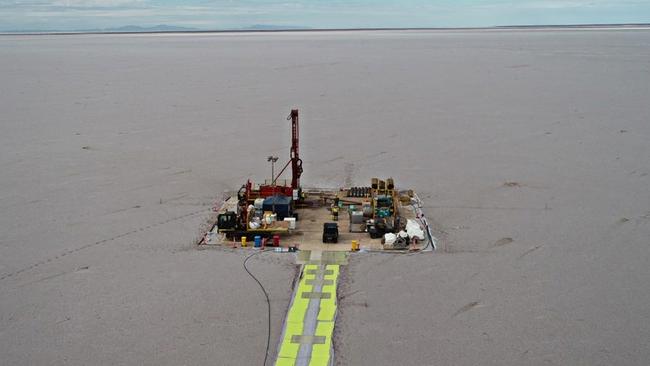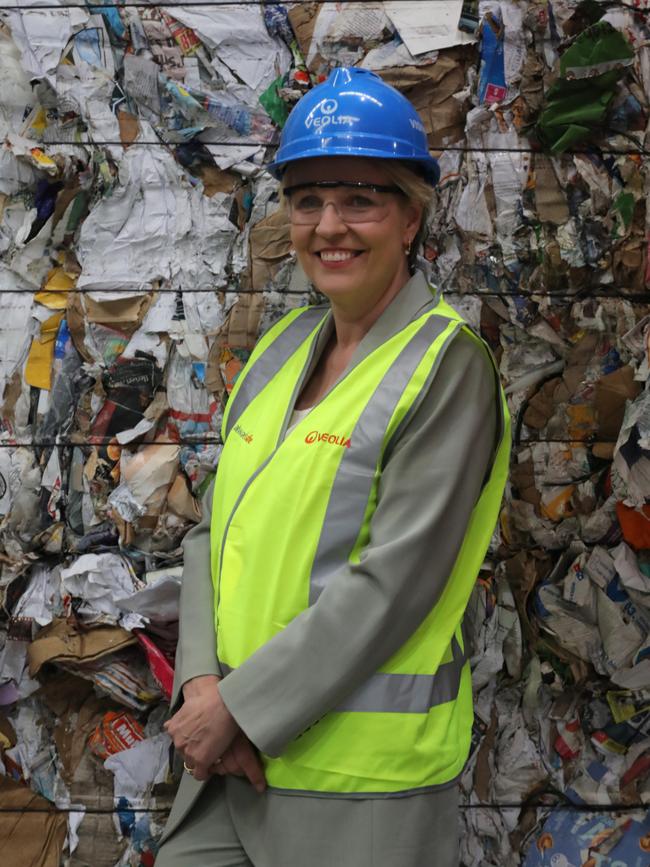Mine overboard: activists in bid to block Olympic Dam-sized dig in South Australia
Australia’s second potential Olympic Dam-sized mine is under threat from a fresh Indigenous heritage claim under federal law seeking to override all state approvals.

Tanya Plibersek faces a fresh controversy over the use of Indigenous heritage orders to stop resources operations, with a report recommending the Environment Minister make a declaration over significant sections of Lake Torrens in South Australia that would halt a prospective mine the company claims had the potential to rival BHP’s giant Olympic Dam.
Ms Plibersek recently applied the same rarely used mechanism available under the Aboriginal and Torres Strait Island Heritage Protection Act 1984 to stop Regis Resources’ $1bn McPhillamys Gold Project near Blayney in NSW going ahead, sparking a backlash from the sources sector.
The Australian has confirmed that a two-year report into another section 10 application lodged in 2021 by two members of the Kokatha Aboriginal Corporation in South Australia on the entirety of Lake Torrens recently recommended to Ms Plibersek that a heritage order be declared on specific areas that could halt all future mining exploration.
The recommendation for the use of commonwealth powers to override South Australian government approvals comes nine months after the company, won a Supreme Court appeal for the project to proceed.
Orpheus Uranium, a minnow operation formerly known as Argonaut Resources, has approval from the SA government for drilling on the shores of Lake Torrens, and claims to have high prospects for significant copper resources, as well as potential uranium and gold, under its Murdie project operated through a subsidiary company, Kelaray.
In correspondence obtained by The Australian, the company warned the SA government that it was notified in March that a recommendation had been made to Ms Plibersek for a section 10 declaration to be made that would not only affect its operations but all future minerals exploration in the area and have ramifications for other non-mining activities in South Australia.
Ms Plibersek’s office said the minister had not made a decision in the Lake Torrens case and that the special report required under the Act, which recommended a declaration be made, would be only one factor in her decision.
A spokesperson for Ms Plibersek said: “We don’t comment on regulatory processes that are underway because the minister does not pre-judge any specific matter.”

It is understood that the project is still being assessed for procedural fairness, with the Environment Department having not yet made a final recommendation to the minister.
The company was advised on March 21 that the recommendation had been made, effectively stalling operations that had already incurred between $15m and $20m in costs.
In a letter to SA Mining Minister Tom Koutsantonis on July 8, Orpheus Uranium chairman Mick Billing warned that a commonwealth declaration would have wider impacts on mineral exploration in a region neighbouring BHP’s Olympic Dam operation – regarded as having the largest uranium deposit in the world.
“If this recommendation becomes a declaration section 10 of the ATSIHP Act it will impact the project area covered by Kelaray’s tenements, effectively placing a permanent embargo on mineral exploration in these areas,” Mr Billing wrote.
“This would result in the effective in-perpetuity sterilisation of access to the Torrens/Murdie targets, which remain highly prospective for discovery of a second Olympic Dam.
“A permanent embargo on these areas would also set a precedent that could have far-reaching practical, legal and economic implications – not just for Orpheus or other minerals explorers – a section 10 declaration could also impact areas of the state across other industry activities and potential development.”
The section 10 recommendation for Lake Torrens is one of what is understood to be up to 10 similar applications sitting on Ms Plibersek’s desk, as part of a recent spike in claims under this section of the legislation.
Ms Plibersek has rejected the majority of recommendations for section 10 orders, with the McPhillamys Gold Project being the first to be approved.
A summary of the recommendation report into the Lake Torrens application – written by David Williams from the Canberra-based group Clansadale Consulting, and obtained by The Australian – noted that the section 10 application was made on the entirety of Lake Torrens but the recommendation for a protection declaration was to be made only for the specific area where the mining activities were located.
“On 6 July 2021 two Kokatha Aboriginal persons, Ms Kahlia Gibson and Mr Glen Wingfield, made an application to the then Minister for the Environment under sections 9 and 10 of the Aboriginal and Torres Strait Islander Heritage Protection Act 1984 (Cth) (the Act) seeking the preservation or protection of a specified area, being Lake Torrens in South Australia,” the report said.
“The application and the applicant’s representations sets out a case for the particular significance of the area to Aboriginal people based primarily on the intangible cultural heritage values ascribed to Lake Torrens by the Kokatha people, together with the four other groups who claim responsibility and cultural custodianship for the lake.
“This intangible heritage entails a number of Dreaming tracks, or songlines, which imbue the lake with particular significance through direct reference to mythical events involving ancestral beings and animals in creation, conflict or journey stories, sometimes with reference to tangible geological or landscape features on or surrounding Lake Torrens.
“In some cases, these stories refer to beings ‘under or in’ the lake. For many groups surrounding Lake Torrens and much further afield, Lake Torrens holds high significance in relation to the Seven Sisters songline and others with acknowledged great significance for Aboriginal people.
“In my view, the applicant has firmly based a claim for significance of Lake Torrens on the requirements and criteria set out in the ATSIHP Act, under which the application is made.
“I recommend that the minister can be satisfied that the specified area set out in the application (Lake Torrens) should be considered a significant Aboriginal area, in accordance with Aboriginal tradition.”
A local Indigenous organisation, Barngarla Determination Aboriginal Corporation, had successfully fought to stop the project in 2022 through the South Australian Supreme Court on the basis that the site was of cultural significance for several Aboriginal peoples including the Adnyamathanha, Barngarla, Kokatha and Kuyani.
The original exploration licence was granted in 2020 by then Liberal premier Steven Marshall on the basis of a series of heritage protections.
The Supreme Court ruling was overturned on appeal in favour of the company in May last year.
According to the section 10 report, Barngala was not party to the section 10 application and gave no response to it.
The South Australian government, despite approving the mining exploration operation, also gave no response to the section 10 process.
The current South Australian Labor government refused to comment when contacted by The Australian, claiming it was a matter for the federal Labor government.
Mr Billing told The Australian: “We look forward to a sensible decision from the minister sooner rather than later so we can get on with our business.”
Association of Mining and Exploration Companies chief executive Warren Pearce, said that, while the sector supported the protection of Aboriginal cultural heritage, “last-minute opaque processes are threatening investment which will ultimately deny traditional owners the benefits they deserve to receive as a result of the project going ahead”.
“The minister has the power to act and listen to common sense. It’s time to sort this mess out,” Mr Pearce said. “This is another example of duplication, wasted resources and why there needs to be changes to the approvals process across the country.
“Orpheus Uranium completed all due diligence, received all relevant state approvals, endured multiple court cases, and jumped over all the hurdles. Then, as they approach the finish line it looks likely they will be slapped with a section 10.
“It’s not just the resource industry that can see this madness; everyday Australians are now aware of it. Common sense is not prevailing and it’s placing jobs and investment at risk.
“We understand the minister inherited section 10s, but surely she has enough evidence to see the risks it poses on the industry and the Australian economy.”




To join the conversation, please log in. Don't have an account? Register
Join the conversation, you are commenting as Logout